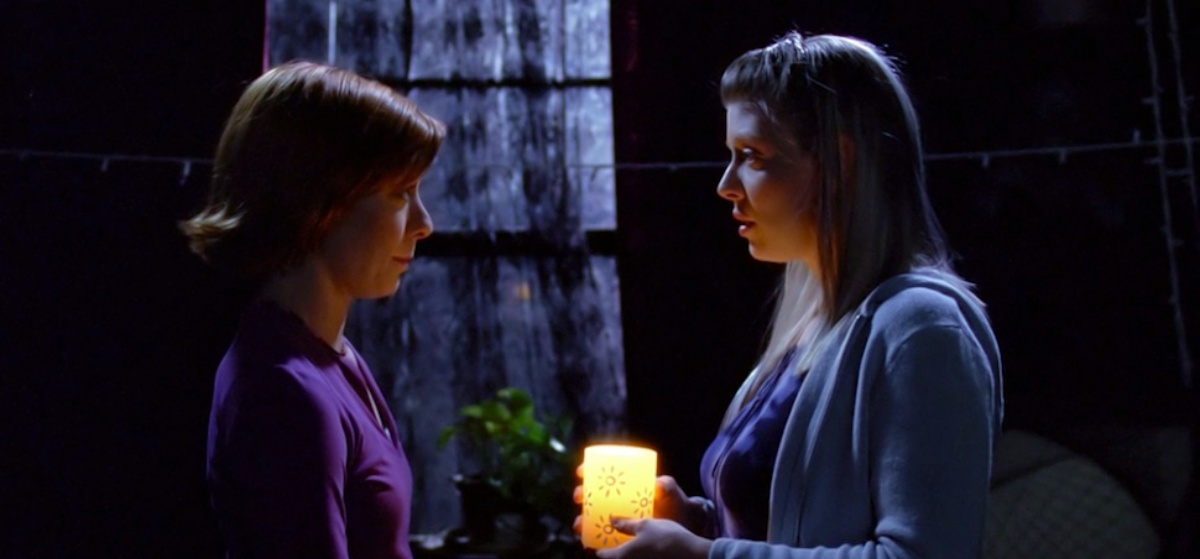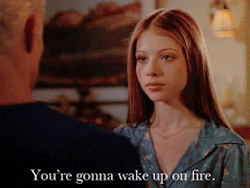Despite a Beautiful Legacy, Buffy‘s Willow & Tara Were a Toxic Couple


One of the things about joining a fandom late is having a different experience with the show. Watching something live as it airs is different from being able to binge it episode to episode, and coming into Buffy: The Vampire Slayer, I was prepared to feel three things based on others’ impressions: for Dawn to be annoying, Spuffy to be hot, and Willow and Tara to be OTP. I didn’t agree with any of that.*
While the first two are strictly a matter of taste, my issue with Willow and Tara was their legacy as the benchmark queer relationship in genre television that all female queer couples are matched up against. Tara being shot by accident, right after her reconciliation with Willow, was a “bury your gays” moment that has rightfully lived in infamy ever since. Especially because of the repercussions of the death for Willow as a character, and all of the trolling that was done to “shock” us.
Even taking into account all of the importance of Willow and Tara as representation for a lot of queer women who realized they loved women, it was difficult watching these two women fall in love, because Willow and Tara are toxic. Mostly because Willow is a horrible person.
I’m sorry if Willow is your fave, but throughout the run of Buffy The Vampire Slayer, for me at least, Willow was a hater of epic proportions. She was a cheater, a liar, an enabler of Xander’s toxic male bullshit, and in season 6, a rapist.
“All the Way” has a conflict between Willow and Tara when Tara worries that Willow is becoming to “addicted” to magic. They have a fight when Willow proposes a magical solution to Dawn’s dating problem and it brings to the surfaces Willow’s addiction to magic. Not wanting to fight anymore, she casts a spell on Tara to make them forget the right and put everything “back to normal.” From this point on until “Tabula Rasa” any time that Willow and Tara are intimate, it is rape.
It is rape because Tara is not consenting with full information about her relationship with Willow. It is a manipulation and a cruelty, but it is never called that. It may not be as “violent” as Spike’s actions in “Seeing Red,” but it still the same action. It is using power to take control over someone else for your own sexual and emotional needs.
When Willow and Tara get back together in “Entropy,” it’s not a conversation that they have. Tara wants to skip right to the kissing, but as a viewer, it just felt like something was missing, despite how beautiful the scene is.
Despite the fact that season six’s villains, The Trio, are all about the ways men attempt to have physical and sexual control over women, especially concerning Warren, that language is never reflected in the case of Willow and Tara.
The fact that queer relationships can be abusive, and that a woman can gaslight and rape another woman, are not things usually explored when we talk about domestic abuse and partner rape. On the Domestic Violence Abuse Hotline, they make it clear that LGBTQ partners can employ the same abusive tactics as heterosexual couples. By using magic to take away Tara’s memories, Willow was violating Tara’s trust and autonomy in a horrible way that stains the couple for me, in a similar way that I could never enjoy Spuffy after “Seeing Red.”
Watching Buffy in my twenties, I could see the abuse in Tara and Willow’s relationship, and it’s one of the many reasons I find Willow awful and don’t ship them. As a queer woman I understand the value of them for people, but for me, the other reason they are important is that it shows that queer relationships can be toxic.
One of the things I disliked about She’s Gotta Have It was framing the same-sex relationship between Opal and Nola as inherently “safer” than a heterosexual relationship. That is damaging because it stops victims of domestic abuse from seeing what is happening to them as wrong, or being believed when they ask for help.
Thankfully, we have more queer relationships between women to look at as positive narratives: Yorkie and Kelly from San Junipero, Wayhaught from Wynonna Earp, and Hollstein from Carmilla to name a few. Willow and Tara may have helped normalize lesbian couples for a generation, but that generation then went and made that kind of representation much better.
I’m thankful that Willow and Tara existed, but I’m much happier that we have moved the needle forward.
*Yes, I think Dawn is fine. I like her and she does the best she can with a role that’s clearly written for a younger person. Plus, when she told Spike she would light him on fire, she gained a fan for life.

(images: 20th Century Fox)
Want more stories like this? Become a subscriber and support the site!
—The Mary Sue has a strict comment policy that forbids, but is not limited to, personal insults toward anyone, hate speech, and trolling.—
Have a tip we should know? [email protected]
